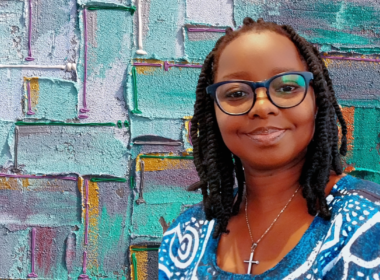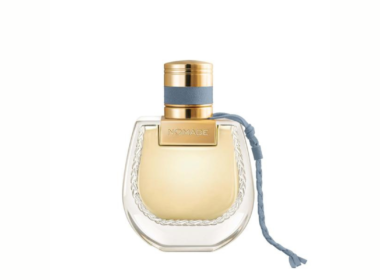Marcella Duske guides our mind again to think about turning what was once discarded into stunning, functional pieces that transform spaces. It is a milestone for Marcella to win the “Disruptive Mind by Glo” award for her creative designs in sustainable interior design. The tentacles of sustainability wax stronger, penetrating all sectors of life. While the public’s perception of upcycling continues to evolve, we’ll examine the creative process behind this movement, the challenges, the future of sustainable design, and the impact Marcella hopes to make.
FAB: What initially drew you to the world of interior upcycling and design, and what continues to inspire you in this field?
Marcella Duske: What initially drew me to the world of interior upcycling and design was my passion for creativity and sustainability. I love transforming old or unused items into something new and beautiful. The opportunity to be eco-friendly while creating unique, personalised pieces totally fascinated me.
What continues to inspire me are the endless possibilities and constant evolution in this field. Every project offers new challenges and chances to expand my skills and implement cool ideas. Additionally, knowing that I’m contributing to environmental protection by reducing waste and conserving resources motivates me.
FAB: What is your philosophy on upcycling and sustainability?
Marcella Duske: My philosophy on upcycling and sustainability is based on the responsibility to protect the environment. Through upcycling, we make the most of existing resources, reduce waste, and conserve valuable materials. For me, sustainability means making conscious choices and creating durable, eco-friendly designs. My goal is to design beautiful spaces while making a positive impact on the environment.

FAB: Can you walk us through your creative process when upcycling materials into interior design pieces?
Marcella Duske: There are two main processes I use. The first involves having an idea and then finding a suitable product for it. The second process starts with discovering a product and then figuring out what I can do with it. Depending on the product, I choose the appropriate craft approach.
Some upcycling projects are completed quickly, in 1-2 days, while others, like a chair, can take up to 3 months. Depending on the project, I use varying amounts of additional materials. It’s important to me not to use more materials than the original product had. If the amount of additional material exceeds that of the original item, it’s sometimes worth considering whether it makes sense to start the project at all.
FAB: What innovative techniques or materials have you incorporated into your designs, and what impact have they had?
Marcella Duske: I’ve worked with many different materials and continually discovered how innovative even the most common ones can be when used creatively. I’m always amazed by the versatility and flexibility of these materials in various applications.
FAB: Who or what are your biggest influences in the world of design, and how have they shaped your work?
Marcella Duske: My biggest influence is my environment. As a very observant person, I pay close attention to what’s happening around me. However, many of my best ideas come spontaneously. For example, just a few days ago, while I was on vacation sitting on the beach, I suddenly had an idea for a campaign for my upcoming brand.

FAB: How do you think public perceptions of upcycling and sustainable design have changed over the years, and what more needs to be done?
Marcella Duske: I believe we are on a very good path. Using social media to specifically reach and sensitise people who grew up in the era of mass consumption is crucial. We’re accustomed to having everything quickly and in large quantities, with little regard for durability, and that’s the problem. Many items are designed to last only a short time in their original state. However, if we can extend their lifespan with a small makeover, it’s a positive start.
The core issue often lies in the quality of the products we buy. Even an IKEA shelf that’s been repainted three times will eventually lose its stability. For me, though, this is not the main focus of upcycling, even though I see it emphasised by many other creators. I prefer working with high-quality, older pieces where the design might be outdated but has the potential to last another 50 years. Repurposing is also an exciting area for me—like turning a 100-year-old steel fire bowl into a chair.
More Like This:
Now’s Your Time To Consume Fashion Sustainably
Maria Fürnkranz-Fielhauer proves that fashion doesn’t have to compromise ethics or style.
First upcycling streetwear collection from PLNGNS for Berlin Fashion Week
Young fashion and style talent honoured at Berlin Fashion Week with New Faces Award Style
FAB: What are the biggest challenges you face in upcycling and interior design, and how do you overcome them?
Marcella Duske: I love what I do, but I can sometimes be very impatient and dislike waiting. In upcycling and interior design, patience is often required, whether it’s due to drying times or things not turning out as expected, which happens quite often. Sometimes it’s helpful to take a short break and return the next day with a fresh perspective. I must say, I’ve never truly been at a loss for ideas, as new ideas always come to me while working on a project.
FAB: How do you see the future of upcycling and sustainable design evolving, and what role do you hope to play in it?
Marcella Duske: I am currently in the process of starting my own design business, and I want to focus not only on upcycling but also on designing my own products from recycled materials. I feel that something is already changing: there has been real upcycling hype, and I hope it remains relevant for a longer time because the concept should not change. Everyone wants to save money, and it’s enjoyable to create something new from old items while also contributing to climate protection.
However, I also see some issues. For example, there is a trend of buying something new from IKEA, modifying it, and then calling it upcycling. In my opinion, this doesn’t qualify as true upcycling, even though it is well received. It’s challenging because one often has to buy new materials for the upcycling process. Transforming a new IKEA product and then labelling it as upcycling seems problematic to me. Additionally, hype can often have negative effects because it tends to be short-lived and may undermine the long-term impact of sustainable practices.
FAB: Winning an award through community voting indicates strong support. How does it feel to have your work recognised and supported by the community?
Marcella Duske: I’m truly delighted. I didn’t expect this at all and am thrilled to see that my ideas are resonating with people and inspiring others. I’m incredibly grateful for the support I receive, which encourages me to pursue my dream of becoming a self-employed designer. I owe a lot to the people who continuously motivate me and provide positive feedback on my work. Stay up to date on the latest in fashion, arts, beauty, and lifestyle by following FAB L’Style Magazine.
FAB: What does receiving the “Disruptive Mind by Glo” award mean to you, and how do you plan to use this recognition to further your career?
Marcella Duske: Receiving the award is a complete validation that I’m on the right track, and I’m very happy to have received this motivational boost. I’m currently taking the step into self-employment; a few weeks ago, we founded our company, and this week, the project development for one of my projects has begun. Production is set to start in October. I’m also very excited about what the future will bring.
Ana Kohler on winning BUNTE New Faces Award for “Young Style Icon”











